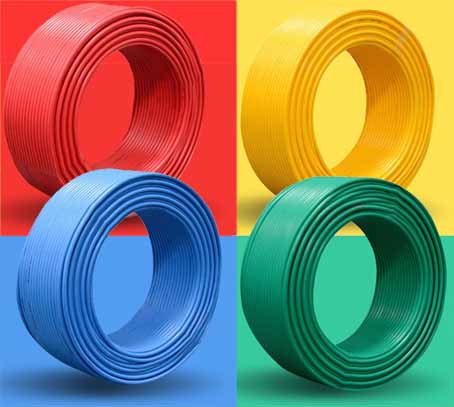Manufacturer of low-smoke and halogen-free wires and cables

What is halogen-free cable?
Refers to halogen-free cables made of plastic materials that do not contain halogen (F, Cl, Br, I, At), lead, cadmium, chromium, mercury and other environmental substances. An environmentally friendly cable that does not emit toxic fumes (such as hydrogen halide, carbon monoxide, carbon dioxide, etc.) when burned.
Introduction to halogen-free cables
Halogen refers to: the value of all halogens is 50PPM (≦according to regulations PREN 14582)
● The content of hydrogen halide gas produced after combustion <100PPM (according to the regulations EN5067-2-1)
● The PH value of the hydrogen halide gas generated after combustion is 4.3 (≧ weak acid) after dissolving in water (according to the regulations EN-50267-2-2)
The product has a light transmittance of 60% after burning in a closed container (≧ according to regulations EN-50268-2)
● Pb <90PPM, Cd, Cr6+, Hg, PBBs, PBDEs are all less than 5PPM
The development trend of halogen-free cables
A: Traditional PVC wires and cables will produce smoke containing toxic gases such as hydrogen halide, carbon monoxide, and carbon dioxide when burned. This not only affects the smooth progress of disaster relief work, but also causes a "second disaster" to life and property;
B: The strongest opposition to the application of PVC is Switzerland, Germany, Sweden, the United States, Japan and some other countries. The legislative bodies and coordinating agencies of these countries have enacted strict laws to restrict and eventually abolish the industrial application of PVC;
C: According to SS-00259, the Japanese SONY company began to require the wires provided by suppliers to meet the full low-smoke and halogen-free requirements (except for high-temperature wires such as FEP) on January 1, 2005.
Characteristics of halogen-free cables
(1) The tensile strength is greater than that of ordinary PVC wires: Generally, the tensile strength of PVC wire is greater than 1.05Kgf/mm2, while the tensile strength of low-smoke halogen-free wire is greater than 1.2Kgf/mm2;
(2) Good weather resistance (-30~105)℃;
(3) Have good softness (hardness 80-90);
(4) having a non-metastatic (because this product formulation without adding plasticizer, so that there will be no shift of the shape);
(5) No toxic black smoke will be produced during combustion (a small amount of white smoke will be produced);
(6) High volume resistivity: PVC wires are generally 1012~1015?/cm3, and low-smoke and halogen-free wires are greater than 1016?/cm3;
(7) It has good high-voltage resistance: PVC wires generally can withstand more than 10KV, while low-smoke and halogen-free wires are as high as 15KV;
(8) It has good elasticity and viscosity.
3. Additive materials for low-smoke and halogen-free wire formula:
(1) Select linear PE and elastic PE as the main resin, and use three kinds of metal oxides containing crystal water as flame-retardant materials: they lose crystal water above 200℃, 300℃, and 300℃.





